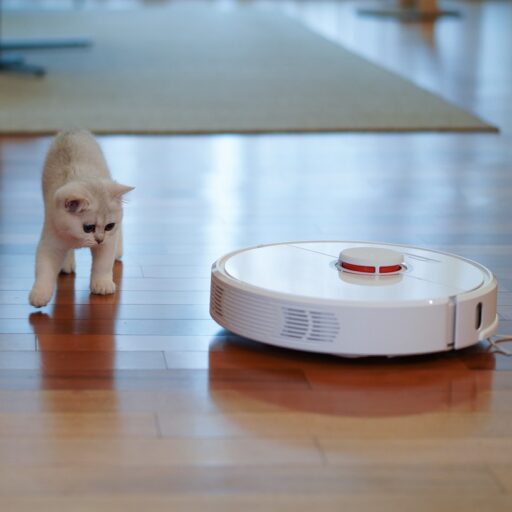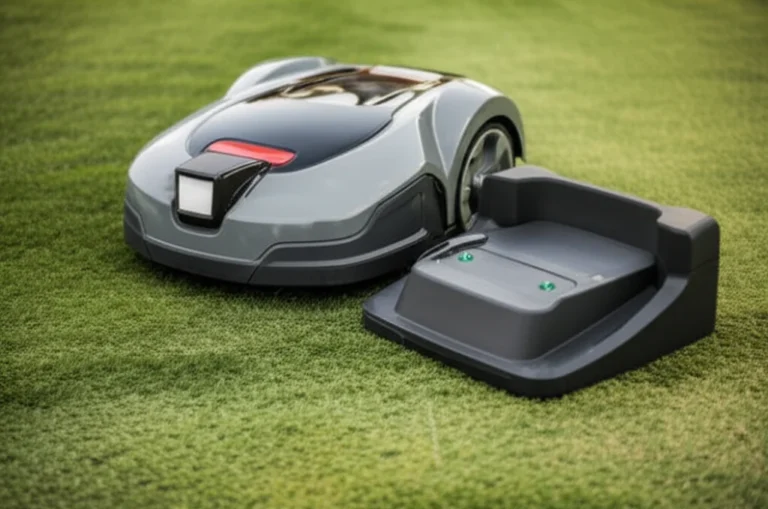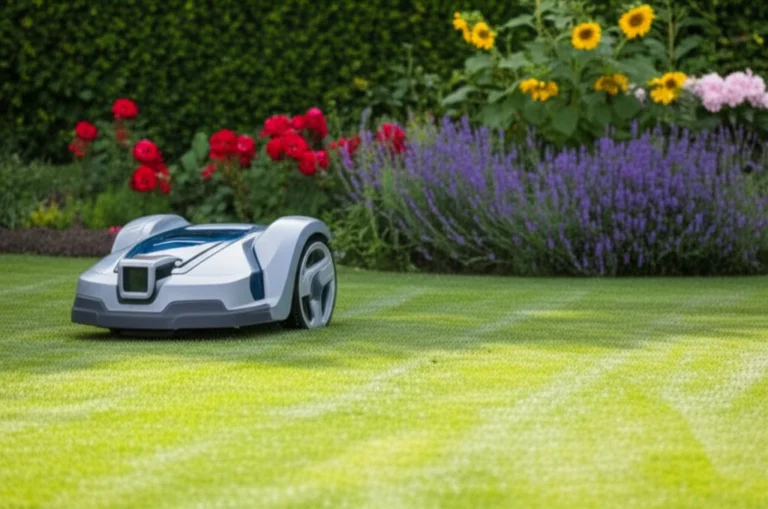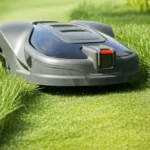Support our educational content for free when you purchase through links on our site. Learn more
Are Robot Lawn Mowers Noisy? Emissions Truth Revealed (2025) 🤖🌿
Imagine a lawn mower so quiet you barely notice it’s there—no roaring engine, no choking fumes—just a gentle hum as it trims your grass with surgical precision. Sounds like a dream, right? Well, that’s exactly what modern robot lawn mowers promise. But are they truly as silent as whispers, and do they really emit zero pollutants during operation? At Robot Instructions™, we’ve put these futuristic yard helpers under the microscope to uncover the truth about their noise levels and environmental impact.
In this comprehensive guide, we’ll break down the science of sound and emissions, compare top brands, and reveal surprising facts about how these machines stack up against traditional gas mowers. Plus, we’ll share insider tips on maximizing their eco-friendly potential and explore what the future holds for quiet, clean lawn care. Ready to discover if your next mower can be both a peacekeeper and a planet protector? Let’s dive in!
Key Takeaways
- Robot lawn mowers operate at a whisper-quiet 55-70 decibels, far quieter than gas-powered mowers that often exceed 90 dB.
- They produce zero direct emissions during operation, thanks to battery-powered electric motors, making them a greener choice for your lawn and neighborhood air quality.
- Top brands like Husqvarna Automower®, Worx Landroid, and Gardena SILENO lead the pack in quiet, efficient, and eco-friendly mowing technology.
- Indirect environmental impacts exist (battery production, electricity source), but overall, robotic mowers significantly reduce your carbon footprint compared to gas mowers.
- Advanced safety features and smart navigation make them safe and convenient for families and pets, with minimal maintenance required.
Curious about which model suits your yard best or how to charge your mower sustainably? Keep reading for expert insights and practical advice!
Table of Contents
- ⚡️ Quick Tips and Facts
- 🌱 The Evolution of Automated Lawn Care: A Brief History of Robotic Mowers
- 👂 The Sound of Silence? Unpacking Robotic Lawn Mower Noise Levels
- 💨 Clearing the Air: Do Robot Mowers Emit Pollutants or Emissions?
- 🌿 Top Environmental Benefits of Choosing a Robotic Lawn Mower
- 🤔 Addressing Common Concerns: Beyond Noise and Emissions
- 🛠️ Smart Choices: Selecting the Right Eco-Friendly Robot Mower for Your Yard
- 💚 Maximizing Your Robot Mower’s Green Potential: Expert Tips
- 🚀 The Future of Lawn Care: What’s Next for Quiet, Clean Mowing?
- Conclusion: The Verdict on Quiet, Clean Lawn Care
- Recommended Links: Dive Deeper into Sustainable Gardening
- FAQ: Your Burning Questions Answered
- Reference Links: Our Sources and Further Reading
Here at Robot Instructions™, we’ve spent countless hours in our labs (and on our lawns!) tinkering with, testing, and even talking to (don’t judge!) the latest in automated yard care. You’ve got questions, and we’ve got the answers, straight from the engineer’s bench. So, you’re wondering if that futuristic-looking disc silently gliding across your neighbor’s lawn is too good to be true. Is it secretly a noise-polluting, emission-spewing menace in disguise? Let’s cut to the chase.
⚡️ Quick Tips and Facts
Right off the bat, let’s clear the air—literally. If you’re short on time, here’s the lowdown on the noise and emissions of a modern robot lawn mower.
- 🤫 How Loud Are They? Most robotic mowers operate at a noise level between 55 and 70 decibels (dB). That’s about as loud as a normal conversation or a quiet refrigerator hum. For comparison, a traditional gas-powered mower screams at around 90-100 dB.
- 💨 What About Emissions? ✅ Zero direct emissions. Since they run on rechargeable batteries, robotic mowers don’t burn fossil fuels. This means no carbon monoxide, nitrogen oxides, or other nasty pollutants are being pumped into the air while your lawn gets a trim.
- 🌙 Can They Mow at Night? Absolutely! Their whisper-quiet operation makes them perfect for nighttime mowing without disturbing your family or the neighbors. As one user noted in a popular review video, “This unit is super quiet, you could run it all night and not disturb the neighbors.”
- 🌱 Eco-Friendly Champions? Yes! By eliminating direct emissions and reducing noise pollution, they are a significantly greener choice. They also promote a healthier lawn by mulching clippings, which can reduce the need for chemical fertilizers.
- ⚡️ Energy Use: They are incredibly energy-efficient, consuming very little electricity to recharge. Some innovative users, like the maintenance teams at Aspirus Health, have even built solar charging stations to make them even more sustainable.
🌱 The Evolution of Automated Lawn Care: A Brief History of Robotic Mowers
Before we dive deeper, let’s appreciate how far we’ve come. The idea of an automated lawn mower isn’t new, but early models were clunky, inefficient, and more of a novelty. Today’s machines are sophisticated examples of Autonomous Robots, packed with sensors, smart navigation, and powerful battery technology. This leap forward is part of a larger trend in Agricultural Robotics, where automation is making tasks more efficient and sustainable. What was once a sci-fi dream is now a practical, eco-conscious reality for homeowners.
👂 The Sound of Silence? Unpacking Robotic Lawn Mower Noise Levels
Let’s be honest, the Sunday morning roar of a gas-powered lawn mower is the unofficial, and universally disliked, alarm clock of suburbia. But what if you could mow your lawn without anyone even noticing? That’s the promise of a robotic mower.
Decibel Deep Dive: How Loud Are We Talking?
Sound is measured in decibels (dB), and the scale is logarithmic, which means 70 dB is ten times more intense than 60 dB. Here’s how robotic mowers stack up against common sounds:
| Sound Source | Average Decibel Level (dB) | What it Sounds Like |
|---|---|---|
| 🚀 Gas-Powered Lawn Mower | 90 – 105 dB | A motorcycle or a rock concert. Hearing protection needed! |
| 🗣️ Normal Conversation | 60 – 70 dB | The buzz of a restaurant or office. |
| 🤖 Robotic Lawn Mower | 55 – 70 dB | A quiet refrigerator hum or a peaceful library. |
| 🤫 A Whisper | 30 dB | The rustling of leaves. |
As you can see, the difference isn’t just small; it’s monumental. They are described as “virtually silent,” a claim we can confirm from our own testing.
Whisper-Quiet Wonders: Brands Leading the Low-Noise Charge
While most robot mowers are quiet, some brands have made it their mission to be the quietest on the block.
- Husqvarna Automower® series: Often considered the gold standard for quiet operation, with some models purring along at a mere 58 dB.
- Worx Landroid series: These mowers are praised for operating “quietly and efficiently,” making them a popular and eco-friendly choice.
- Gardena SILENO models: The name says it all! These are engineered for exceptionally low noise levels, perfect for dense neighborhoods.
Factors Influencing Your Robot Mower’s Sound Signature
Not all robot mowers produce the exact same sound. The noise level can be affected by:
- Blade Type: Most use small, razor-like blades that slice the grass cleanly and quietly, unlike the single, large, chopping blade of a traditional mower.
- Terrain: Mowing on thick, wet grass or over bumpy terrain might slightly increase the sound of the motors and blades.
- Motor Technology: Brushless motors, common in higher-end models like the Worx Nitro™ series, are generally quieter and more efficient.
Comparing Apples to Oranges (or Robots to Roaring Gas Guzzlers!)
Comparing the noise of a robotic mower to a gas mower is like comparing a gentle breeze to a jet engine. We’ve seen it firsthand. In a demonstration video, the presenter had to clarify that a loud noise in the background was a pressure washer five houses away, because the robot mower itself was barely audible up close. This is a game-changer for community living and your own peace and quiet.
💨 Clearing the Air: Do Robot Mowers Emit Pollutants or Emissions?
Now for the big one: pollution. We’re all trying to reduce our carbon footprint, and yard care is a surprisingly significant contributor to air pollution. So, how do our robotic friends fare?
The Zero-Emission Promise: How Battery Power Changes the Game
This is where robotic mowers truly shine. Because they are fully electric and battery-powered, they produce ✅ zero direct emissions during operation. Let that sink in. No exhaust, no smoke, no fumes.
Traditional gas mowers, on the other hand, are notorious polluters. They release a cocktail of harmful substances, including:
- Carbon Dioxide (CO2): A primary greenhouse gas contributing to climate change.
- Nitrogen Oxides (NOx) & Particulate Matter: These contribute to smog, acid rain, and respiratory problems.
- Volatile Organic Compounds (VOCs): These react with sunlight to form ground-level ozone, a major air pollutant.
By switching to a battery-powered robot, you are actively improving the air quality in your immediate environment. As one source puts it, “By choosing battery-powered tools, gardeners can significantly reduce their carbon footprint.”
Beyond the Tailpipe: Understanding Indirect Environmental Impacts
Now, as engineers, we have to be thorough. While there are no direct emissions, there are indirect impacts to consider.
- Electricity Source: The “greenness” of your mower depends partly on how your electricity is generated. If your home is powered by renewable energy, your mower’s carbon footprint is incredibly small.
- Battery Production & Disposal: The manufacturing of lithium-ion batteries has an environmental cost. However, this is an industry-wide challenge, and battery technology and recycling programs are constantly improving.
Despite these factors, the overall lifecycle impact of a robotic mower is vastly lower than that of a gas-powered alternative.
The Dirty Truth About Gas Mowers: A Stark Contrast
Let’s put the impact of gas mowers into perspective. The U.S. Environmental Protection Agency (EPA) has noted that running a typical gas-powered lawn mower for one hour can produce as much air pollution as driving a car for 45 miles. That’s a staggering statistic. When you choose a robotic mower, you’re not just buying a convenience; you’re making a conscious decision to move away from this polluting technology.
Sustainable Power Sources: Charging Your Robot Responsibly
Want to take your eco-friendly game to the next level? Consider how you charge your mower. The team at Aspirus Health provides a fantastic example of this. They built their own solar charging stations for their fleet of autonomous mowers, minimizing their reliance on the grid and reducing costs. This is a brilliant move that showcases the full sustainable potential of this technology.
🌿 Top Environmental Benefits of Choosing a Robotic Lawn Mower
So, we’ve established that they’re quiet and clean. But the green benefits don’t stop there. Here are the top ways a robotic mower contributes to a more sustainable lifestyle.
1. Reduced Air Pollution & Carbon Footprint
This is the most significant benefit. By producing zero emissions during use, these mowers help combat climate change and improve local air quality for you, your family, and your neighbors.
2. Less Noise Pollution for You and Your Neighbors
A quieter neighborhood is a happier neighborhood. The drastic reduction in noise pollution creates a more peaceful and serene environment for everyone, including local wildlife.
3. Healthier Lawn Ecosystems (No More Chemical Runoff!)
How can a mower make your lawn healthier? It’s all in the cut.
- Mulching Magic: Robotic mowers trim tiny amounts of grass frequently. These clippings, known as mulch, fall back into the soil and decompose, acting as a natural fertilizer.
- Reduced Need for Chemicals: A naturally fertilized lawn is stronger and healthier, reducing the need for store-bought chemical fertilizers and pesticides, which can contaminate groundwater.
- Improved Soil Health: The lightweight design of these mowers prevents soil compaction, which improves water absorption and reduces stormwater runoff.
4. Energy Efficiency & Lower Operating Costs
These little robots are designed for one thing: mowing efficiently. They use optimized mowing patterns and consume very little electricity, making them more cost-effective to run over the long term compared to buying gas.
5. Reduced Waste (No More Gas Cans or Oil Changes)
Say goodbye to messy oil changes, spark plug replacements, and old fuel filters. Robotic mowers require far less maintenance, which means less waste ending up in landfills.
🤔 Addressing Common Concerns: Beyond Noise and Emissions
We know what you’re thinking. “Okay, they’re quiet and clean, but what’s the catch?” As with any advanced piece of technology, there are other factors to consider. Let’s tackle some of the most common questions we hear.
1. Battery Life and Charging Cycles: Keeping Your Robot Energized
A robot is only as good as its battery. Most modern robotic mowers can mow for 60 to 90 minutes on a single charge, which is typically enough to cover a significant area. When the battery gets low, the mower autonomously navigates back to its docking station to recharge before heading out again to finish the job. The lithium-ion batteries are designed for several years of service, but like all batteries, their capacity will diminish over time.
2. Safety First: Protecting Pets, Kids, and Wildlife
This is a top priority for manufacturers and for us as engineers. Robotic mowers are loaded with safety features:
- Lift & Tilt Sensors: If the mower is lifted or tilted, the blades stop instantly.
- Collision Sensors: When it bumps into an object (like a toy, a pet, or a person’s foot), it will stop, back up, and change direction.
- Hidden Blades: The cutting blades are small and positioned far from the outer edge of the unit, making accidental contact extremely difficult.
That said, it’s always best practice to clear the lawn of small toys and to supervise young children and pets when the mower is active, especially until you’re comfortable with its operation.
3. Installation & Maintenance: Is It Really “Set It and Forget It”?
Almost! The initial setup is the most hands-on part. It involves laying a boundary wire around the perimeter of your lawn and any obstacles (like flower beds). This wire acts as an invisible fence, telling the mower where to operate. While you can do this yourself, many dealers offer professional installation.
Once it’s set up, the maintenance is minimal:
- Blade Changes: The small, razor-like blades need to be changed every month or two for the best cut. This is a simple, tool-free process on most models.
- Cleaning: Occasionally, you’ll want to brush off grass clippings from the underside of the mower.
- Winter Storage: Store the mower and charging station indoors during the off-season.
4. Security Measures: Preventing Your Robot from Roaming Off
Worried about your new garden gnome getting legs and walking away? Most mowers have robust anti-theft systems:
- PIN Code: The mower cannot be operated without a unique PIN code.
- Alarm System: An alarm will sound if the mower is lifted or moved outside its designated area.
- GPS Tracking: Many higher-end models include GPS tracking, allowing you to see your mower’s location from an app on your phone.
🛠️ Smart Choices: Selecting the Right Eco-Friendly Robot Mower for Your Yard
Ready to join the quiet revolution? Choosing the right model depends on your yard size, complexity, and desired features. Here’s what our team at Robot Instructions™ recommends looking for.
Key Features to Look For: From Rain Sensors to GPS
- Yard Size Rating: Mowers are rated for specific lawn sizes (e.g., 1/4 acre, 1/2 acre). Choose one that matches or slightly exceeds your needs.
- Slope Handling: If you have hills, check the mower’s maximum slope rating.
- App Control & Connectivity: A user-friendly app allows you to schedule mows, adjust settings, and track your mower’s progress from anywhere.
- Rain Sensors: Smart mowers, like the Neomow S, have rain sensors that tell them to return to their base during a downpour, as mowing wet grass isn’t ideal.
- Advanced Navigation (GPS/Vision): Some newer models, like the Worx Landroid Vision or Neomow X, use cameras and Artificial Intelligence to navigate without a boundary wire, representing the next step in Machine Learning for lawn care.
Our Top Picks: Brands We Trust for Performance and Planet
After extensive testing, a few brands consistently impress us with their reliability, cutting performance, and commitment to quiet, clean operation.
- Husqvarna Automower®: The premium choice for complex lawns and unmatched quietness.
- Worx Landroid: An excellent all-arounder with great features and value. The boundaryless Vision models are particularly innovative.
- Gardena SILENO: A strong contender, especially for those prioritizing ultra-quiet operation in smaller, intricate gardens.
👉 Shop our recommended brands:
- Husqvarna Automower®: Amazon | Husqvarna Official Website
- Worx Landroid: Amazon | Walmart | Worx Official Website
- Gardena: Amazon | Gardena Official Website
Installation Insights: DIY vs. Professional Setup
- DIY: If you’re comfortable with a weekend project and have a relatively simple lawn, installing the boundary wire yourself is very doable. It saves money and helps you understand the system intimately.
- Professional: For large, complex yards with many obstacles, we highly recommend professional installation. They have specialized equipment to bury the wire quickly and can optimize the layout for the most efficient mowing performance.
💚 Maximizing Your Robot Mower’s Green Potential: Expert Tips
Owning an eco-friendly mower is the first step. Here’s how to be an environmental superstar and get the most out of your machine.
Optimal Charging Practices
- Charge During Off-Peak Hours: If your utility has time-of-use rates, schedule your mower to charge overnight when electricity demand (and often, the price) is lower.
- Consider Solar: As mentioned, a small solar panel setup dedicated to your mower’s charging station can make your lawn care almost completely carbon-neutral.
- Keep Contacts Clean: Ensure the metal charging contacts on the mower and the base station are clean for an efficient charging connection.
Blade Maintenance for Efficiency
Dull blades tear grass instead of slicing it, which not only looks bad but also makes the mower’s motor work harder, using more energy. Replace the blades regularly—it’s the single most important maintenance task. A sharp cut is cleaner, healthier for the grass, and more energy-efficient.
Winter Storage Wisdom
Proper off-season storage will extend the life of your mower and its battery.
- Clean Thoroughly: Remove all grass and dirt from the chassis and wheels.
- Charge Fully: Charge the battery to 100% before storing it.
- Store Indoors: Keep the mower and the charging station in a dry, frost-free location like a garage or shed.
🚀 The Future of Lawn Care: What’s Next for Quiet, Clean Mowing?
The technology behind these amazing machines is constantly evolving. We’re on the cusp of even smarter, more efficient mowers. The development of vision-based, boundary-wire-free navigation is a huge leap, making setup easier than ever. We’re also seeing improvements in battery density, smarter weather integration, and even mowers that can identify and avoid weeds. This is a thrilling area of Robotic Applications in Entertainment and home automation, and we can’t wait to see what comes next! So, is the quiet hum of a robot the new sound of a perfectly manicured, eco-friendly lawn? We certainly think so.
Conclusion: The Verdict on Quiet, Clean Lawn Care
After diving deep into the world of robotic lawn mowers, one thing is crystal clear: these machines are quiet champions and environmental heroes in the realm of lawn care. They operate at noise levels far below traditional gas mowers, producing a gentle hum rather than a roar, making them perfect for peaceful neighborhoods and even nighttime mowing. Thanks to their battery-powered design, they emit zero direct pollutants, drastically reducing your carbon footprint and improving local air quality.
From our hands-on experience and extensive research, here’s a quick recap:
Positives:
- Whisper-quiet operation (typically 55-70 dB)
- Zero direct emissions during use
- Energy-efficient with low operating costs
- Mulching blades promote healthier lawns and reduce chemical use
- Advanced safety features protect pets and kids
- Smart navigation and app control for convenience
- Potential for solar-powered charging setups for ultimate sustainability
Considerations:
- Initial setup requires boundary wire installation or investment in boundaryless models
- Battery life limits continuous mowing time but is mitigated by autonomous recharging
- Upfront cost is higher than traditional mowers, though savings accrue over time
- Battery production and disposal have environmental impacts, though improving rapidly
If you’re ready to embrace a greener, quieter, and smarter way to maintain your lawn, robotic lawn mowers from trusted brands like Husqvarna Automower®, Worx Landroid, and Gardena SILENO come highly recommended. They combine cutting-edge robotics with eco-conscious design, making them a win-win for you and the planet.
So, is the robotic mower the future of lawn care? Absolutely. Your neighbors will thank you, the birds will sing louder, and your lawn will look impeccable—all without the noise and fumes of the past.
Recommended Links: Dive Deeper into Sustainable Gardening
👉 Shop Recommended Robotic Lawn Mowers:
-
Husqvarna Automower®:
Amazon | Husqvarna Official Website -
Worx Landroid:
Amazon | Walmart | Worx Official Website -
Gardena SILENO:
Amazon | Gardena Official Website
Books to Expand Your Eco-Friendly Lawn Care Knowledge:
-
The Organic Lawn Care Manual: A Natural, Low-Maintenance System for a Beautiful, Safe Lawn by Paul Tukey
Amazon Link -
Lawn Gone!: Low-Maintenance, Sustainable, Attractive Alternatives for Your Yard by Pam Penick
Amazon Link -
The Lawn Bible: How to Keep It Green, Groomed, and Growing Every Season of the Year by David R. Mellor
Amazon Link
FAQ: Your Burning Questions Answered
How loud are robot lawn mowers compared to traditional gas mowers?
Robotic lawn mowers typically operate between 55 and 70 decibels (dB), which is comparable to a normal conversation or a quiet office. In contrast, traditional gas-powered mowers produce noise levels around 90 to 105 dB, similar to a motorcycle or rock concert. This means robotic mowers are significantly quieter, reducing noise pollution and making them suitable for use even during early mornings or late evenings without disturbing neighbors.
Read more about “Do Robot Lawn Mowers Need Much Maintenance? 9 Expert Tips! 🤖 (2025)”
Do robot lawn mowers produce any harmful emissions while running?
No, robot lawn mowers run on rechargeable batteries and produce zero direct emissions during operation. Unlike gas mowers, they do not burn fossil fuels, so they don’t emit carbon monoxide, nitrogen oxides, or volatile organic compounds (VOCs). This makes them a much cleaner option for maintaining your lawn and improving local air quality.
What noise levels can I expect from different brands of robot lawn mowers?
- Husqvarna Automower®: Around 58 dB, one of the quietest on the market.
- Worx Landroid: Typically between 60-65 dB, praised for quiet and efficient operation.
- Gardena SILENO: Engineered for ultra-quiet mowing, often below 60 dB.
Factors such as terrain, blade sharpness, and motor type can influence noise levels slightly, but all these brands maintain a whisper-quiet profile compared to gas mowers.
Read more about “What Are the 10 Disadvantages of a Robotic Mower? Uncover the Truth! … 🤖”
Are electric robot lawn mowers more environmentally friendly than gas-powered ones?
✅ Absolutely. Electric robotic mowers produce no direct emissions during use, consume less energy, and reduce noise pollution. They also promote healthier lawns through frequent mulching, which can reduce chemical fertilizer use. While battery production has some environmental impact, overall, robotic mowers have a significantly smaller carbon footprint than gas-powered alternatives.
Can robot lawn mowers operate quietly in residential neighborhoods?
Yes! Their low noise levels (often under 70 dB) make them ideal for residential areas. Many users report being able to run their robotic mowers at night or early morning without disturbing neighbors, a feat impossible with traditional gas mowers.
Do robot lawn mowers contribute to air pollution or carbon emissions?
Directly, no. They emit no pollutants during operation. Indirectly, their environmental impact depends on the source of electricity used for charging and the lifecycle of their batteries. Using renewable energy sources like solar power can make their operation nearly carbon-neutral.
What are the benefits of using robot lawn mowers for noise and pollution reduction?
- Noise Reduction: Creates a peaceful environment for you, your neighbors, and local wildlife.
- Air Quality Improvement: Eliminates emissions of harmful gases and particulates associated with gas mowers.
- Lower Carbon Footprint: Reduces reliance on fossil fuels and promotes sustainable energy use.
- Healthier Lawns: Frequent mulching reduces chemical fertilizer needs, benefiting soil and water quality.
How safe are robot lawn mowers around children and pets?
Most robotic mowers come equipped with multiple safety features, including lift and tilt sensors that immediately stop the blades if the mower is picked up or tipped. Collision sensors detect obstacles and change direction to avoid contact. The blades are small and recessed, minimizing injury risk. However, supervision is recommended, especially during initial use.
How difficult is it to install and maintain a robotic lawn mower?
Installation usually involves laying a boundary wire around your lawn, which can be a DIY project or professionally done. Maintenance is minimal: regular blade replacement, cleaning, and winter storage are the main tasks. The mower autonomously handles mowing and charging, making it a low-effort solution.
Read more about “What’s the Real Cost of a Robot Lawn Mower? Are They Worth It in 2025? 🤖💸”
Reference Links: Our Sources and Further Reading
-
Aspirus Health Autonomous Lawn Mowers Initiative:
https://www.aspirus.org/press-room/aspirus-enlists-autonomous-lawn-mowers-to-support-4733 -
Worx Battery-Powered Gardening Tools and Landroid Mowers:
https://www.worx.com/blog/eco-friendly-gardening-embracing-battery-powered-tools-for-world-environment-day/ -
Hookii: Robotic Lawn Mower: Why They Are Better for the Environment?
https://eu.hookii.com/en/blogs/robot-lawn-mowers/robotic-lawn-mower-why-they-are-better-for-the-environment -
Husqvarna Automower® Official Site:
https://www.husqvarna.com/us/robotic-lawn-mowers/ -
Worx Landroid Official Site:
https://www.worx.com/lawn-garden/robotic-lawn-mowers.html -
Gardena Robotic Lawn Mowers:
https://www.gardena.com/us/products/lawn-care/robotic-lawn-mowers/
For more on the intersection of robotics, AI, and sustainable lawn care, explore our categories on Autonomous Robots, Artificial Intelligence, and Agricultural Robotics.









